Culinary Tours in Iran: A Food Lover’s Guide

“Love passes through the stomach,” the French say. This is no less true for Iranians, for whom food, apart from satisfying physical hunger and helping keep the body healthy, is also invested with spiritual meaning.
To Iranians, the preparation and cooking of food is a prime expression of a woman’s loving care, which transforms even the simplest of meals into nourishment for body and soul.
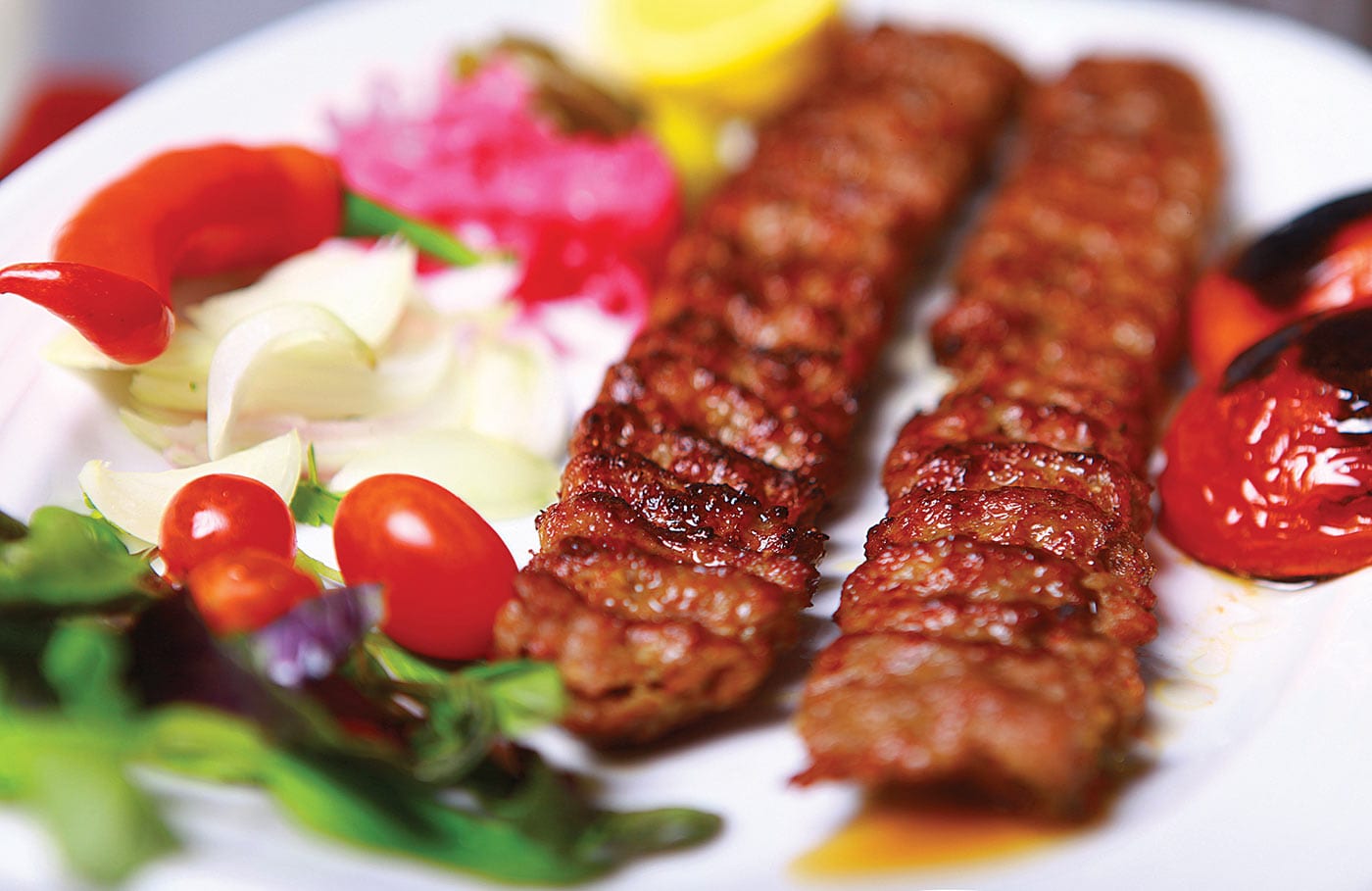
Domestic and food-related work requires a substantial investment of time, effort, and love, and it is therefore ascribed high status in Iranian culture.
Women’s considerable power and authority derives from such work. Traditionally, when parents’ sons and their wives and children shared a large house, the mother-in-law, as the oldest female, had the overall responsibility for meals, controlling supplies and mealtimes.
While large families no longer live together, the pattern continues by relatives eating meals together, a practice central to Iranian culture.
Eating on one’s own is considered undesirable, even quite sad, and TV dinners inconceivable. Even if the television plays in the background, these shared meals reaffirm and strengthen family ties.
As far as everyone’s commitments allow, families have meals together on a daily basis, and if not for lunch, at least for dinner.

RICE, RICE AND RICE
When the new rice crop is harvested in early autumn, many Iranians buy their yearly provision of rice. In the past rice was only eaten on special occasions, but in recent years consumption of rice has risen together with the population and living standards.

Some Iranians feel that they have not eaten at all unless they have had rice for dinner. And they are quite justified: anyone who has ever tasted Iranian-style rice admires the aroma, flavor, and fluffiness of a satisfying yet unbelievably light and versatile dish that can be combined with kebabs, Iranian stews, and even Indian curries.
YOU ARE WHAT YOU EAT
Many Iranians believe illnesses are caused by an imbalance in the body, and since every food is classified chemically as either “hot” or ”cold,” illnesses can be treated by consuming foods that counter the imbalance.
Every Iranian dish is put together as a balanced whole. Lamb, mutton, and chicken are “hot,” so they are balanced with barberries (as in chicken with barberries—zereshk polo), tomato paste, and dried limes, and served with rice, all of which are “cold.”
DAILY BREAD (NÂN)
Even though rice is now consumed at least once a day, usually for dinner, bread remains Iranians’ staple food. The first thing one notices about Iranian bread is that it is flat, quite unlike American and European loaves, and that it is usually baked while you wait.
There are four main types of Iranian bread, with variations, each type appropriate to different dishes, and each bakery (nân-vâ’i) bakes only one kind.
In the past bread dough was rolled out by hand and baked individually, but now, at least in big cities, machines do this to meet the increased demand.
Handmade bread is still preferred and much sought after by urban dwellers whenever they visit the provinces, where handmade bread is more commonly found.

TYPES OF IRANIAN BREAD
BOOK ONLINE
Isfahan Hotels
Barbari bread
The ultimate breakfast bread. Thick and long, ideal for breakfast with feta cheese or eggs.
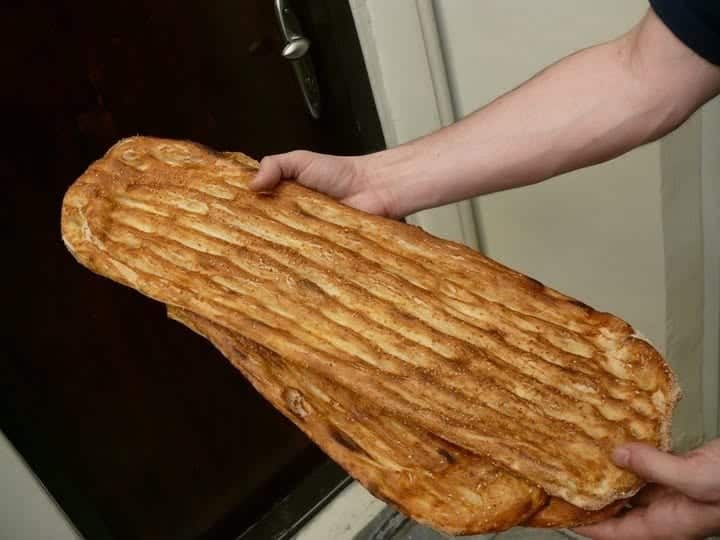
Tâftoon bread
Round with rows of holes that are made in the dough with a wooden implement resembling a very wide-toothed comb. This is a versatile, filling bread good for breakfast, kebabs, and meals eaten without rice.
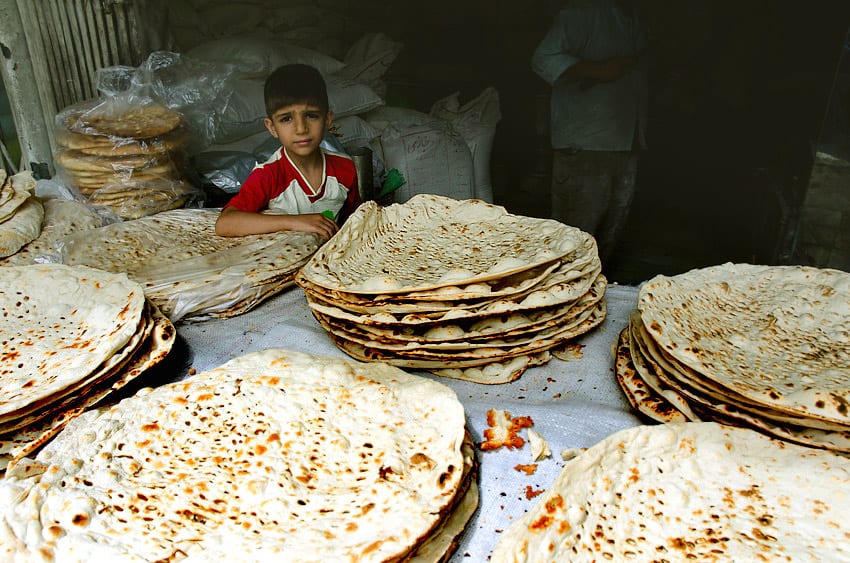
Lavâsh bread
The thinnest of all breads. Oblong and wide, and flexible enough to make wraps of fresh herbs and white cheese or any other filling. This bread is also used for making samosas.
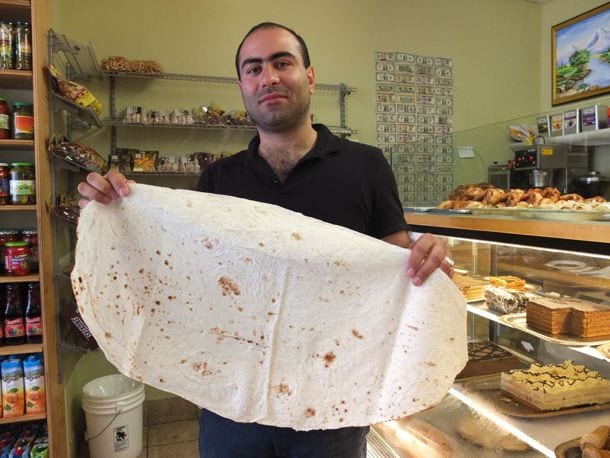
Sangak bread
The only wholegrain bread. Lightly salted, thinner than barbari, and baked on a bed of hot pebbles, it is especially compatible with the traditional dish of âb-gusht. Mind your teeth, though; sometimes little pebbles may be embedded in the bread.
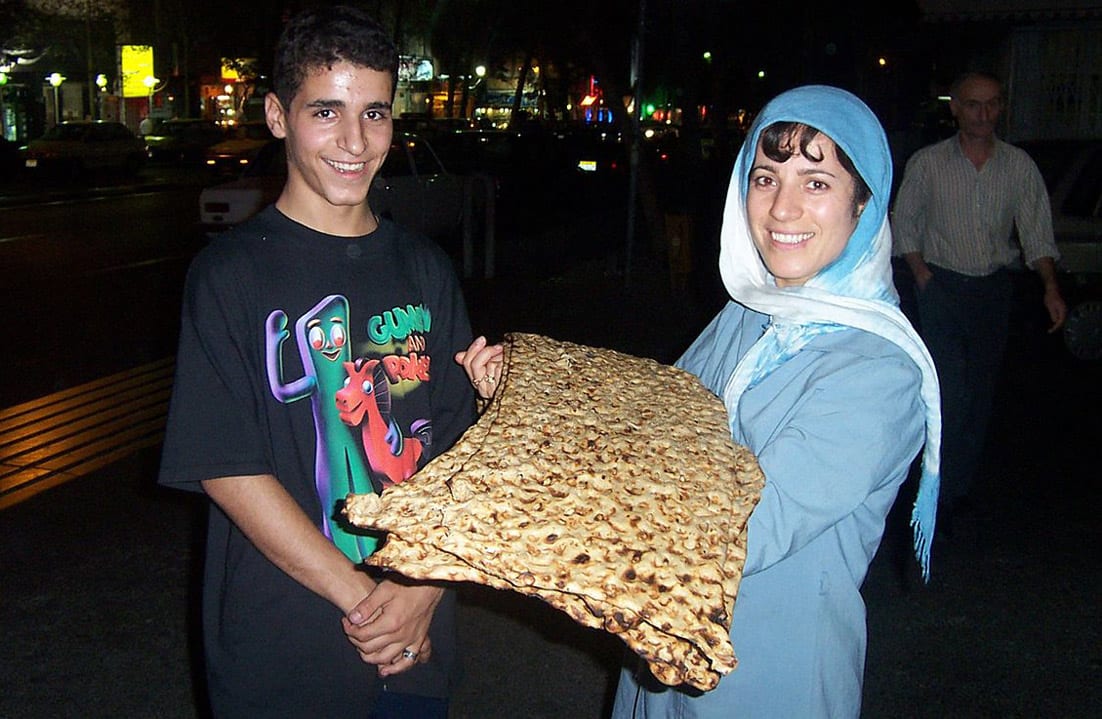
PERSIAN TEA
On every social or business visit, the absolute minimum a visitor is offered is tea, traditionally served in small, hourglass-shaped golden rimmed tea glasses standing on deep saucers.
Clear glasses are preferred to china cups so the drinker can appreciate the color as well as the flavor of the tea.
Many households are now replacing tea glasses with china cups, at least when entertaining guests. Iranians view the teacups as more formal and genteel, but in the privacy of one’s own home.
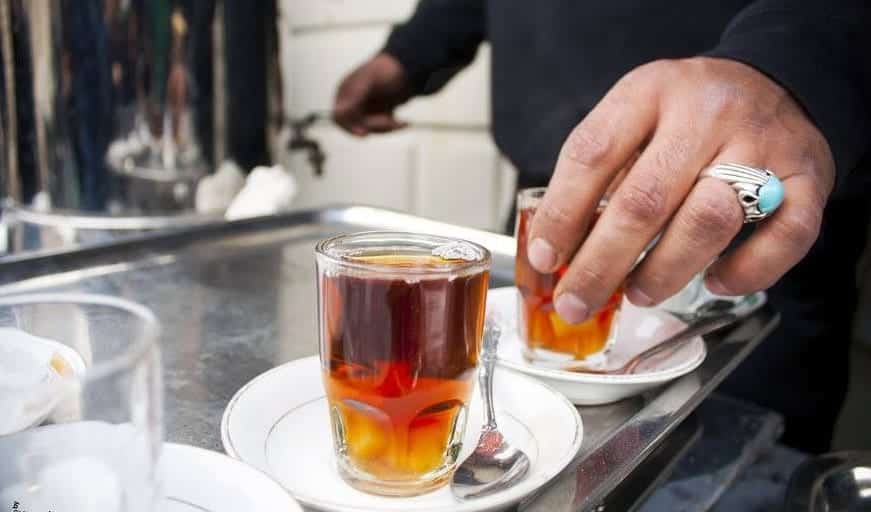
A bowl of irregularly shaped cubes of sugar are served with the tea, but without tongs or a teaspoon. You are meant to put the sugar lump, called ghand, in your mouth between your teeth and tongue and let the tea wash over it until it dissolves.
As you can imagine, the first mouthful is much sweeter than the later ones. The reason behind this practice is that the sweetness of the ghand distorts the tea flavor, so one can only appreciate it by the gradual decrease in the sweet taste.
Speaking is a little difficult while the sugar lump is in one’s mouth, but experienced tea drinkers have a way of trapping the sugar lump between teeth and cheek, or between tongue and palate while they speak.
DESSERTS
Iranian candy stores are filled with irresistible temptations: French-style cream cakes, Danish pastries, cream éclairs, mille-feuilles, and teacakes are next to traditional Iranian sweets like pistachio nougat (gaz), saffron brittle (sohan), baklava, little parcels of shortbread pastry enclosing crushed almonds (ghotâb), and all sorts of salted nuts and dry fruit mixes.
Apart from store-bought delicacies, some candies and desserts are made at home on special occasions.
These include a rice and saffron dessert (shollezard) either during Ramadan or as a pledge for a wish fulfilled to be distributed in the neighborhood, as well as halva, a candy known all over the Middle East in various guises.
Rosewater, saffron, and sometimes cardamom give traditional Iranian candies and desserts a distinct flavor.

In business meetings candies or pastries may be offered, but in social visits fresh fruit is considered obligatory. The size, shape, and quality are paramount, with bigger equaling better, at least as far as oranges are concerned.
– Among the Iranians: A Guide to Iran’s Culture and Customs by Sofia Koutlaki
APPLY ONLINE
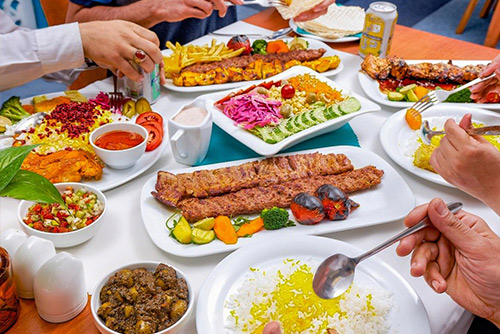





Sono stata in Iran!! Ho trovato un paese stupendo!! Il mangiare era tutto buonissimo!! Spero in futuro di ritornarci
We hope to see you in Iran again 🙂